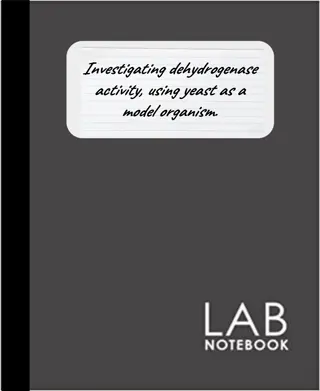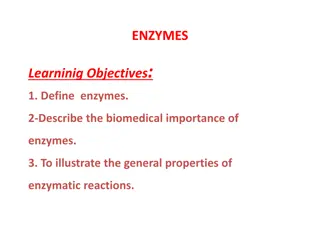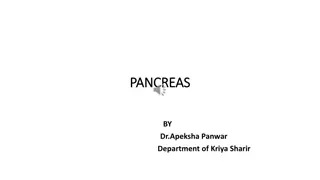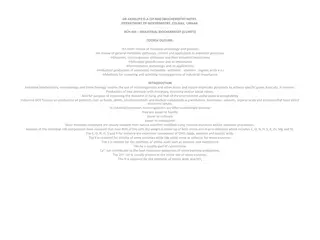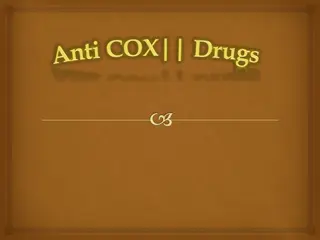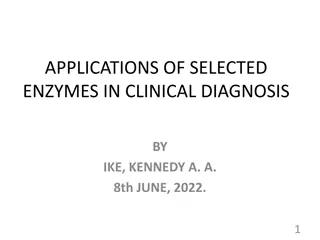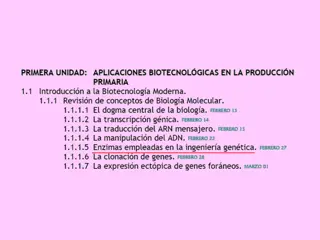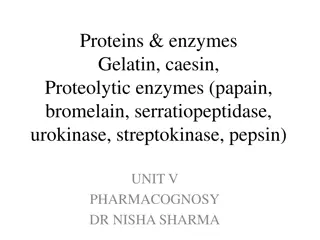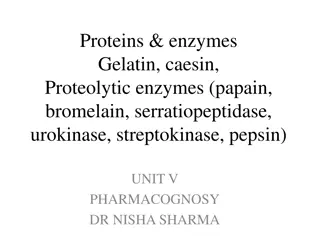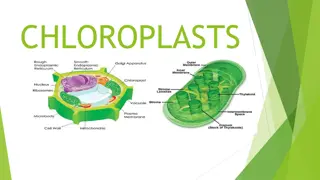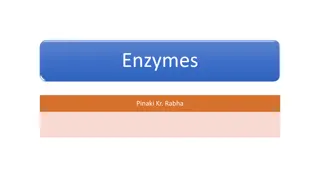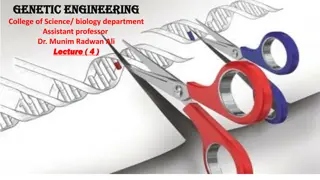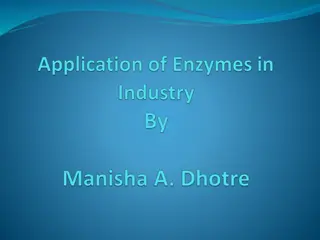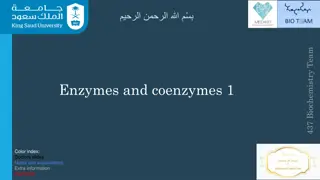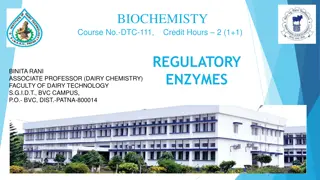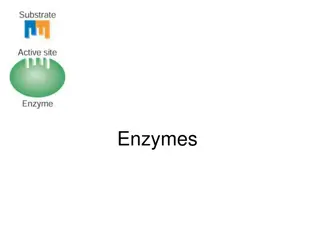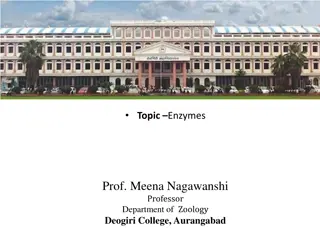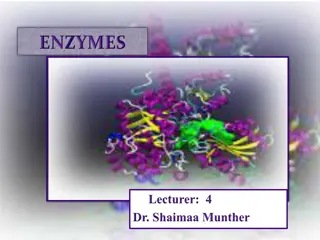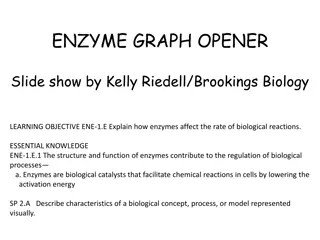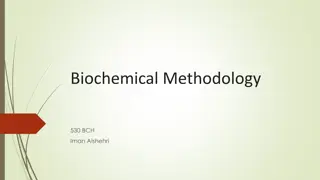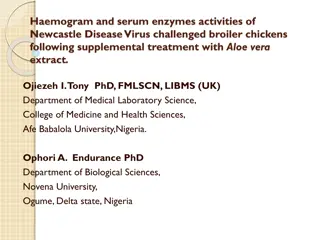Dehydrogenase Enzymes and Their Activities
Dehydrogenases are intracellular respiratory enzymes that play a crucial role in oxidation-reduction reactions by transferring hydrogen atoms. This article explores the functions and properties of dehydrogenase enzymes, including the procedure to demonstrate their activity in a plant sample. Lactate dehydrogenase, a specific type of dehydrogenase, is also discussed in detail. Learn about the importance of dehydrogenases in cellular energy generation and metabolism.
Download Presentation

Please find below an Image/Link to download the presentation.
The content on the website is provided AS IS for your information and personal use only. It may not be sold, licensed, or shared on other websites without obtaining consent from the author.If you encounter any issues during the download, it is possible that the publisher has removed the file from their server.
You are allowed to download the files provided on this website for personal or commercial use, subject to the condition that they are used lawfully. All files are the property of their respective owners.
The content on the website is provided AS IS for your information and personal use only. It may not be sold, licensed, or shared on other websites without obtaining consent from the author.
E N D
Presentation Transcript
T. Turnberg discovered this group of enzymes. Dehydrogenases are group of intracellular respiratory enzymes that catalyze oxidation reduction reactions. Dehydrogenases transfer two hydrogen atoms from organic compounds to electron acceptors, thereby oxidizing the organic compounds and generating energy. Dehydrogenases catalyze the oxidation-reduction reaction with the help coenzyme such as NAD+/NADP+or flavin such as FAD, FMN as an electron acceptor. Alcohol dehydrogenase catalyzes the conversion of alcohol to aldehyde/ketone with the reduction of NAD(P)+to NAD(P)H. These enzymes do not occur in a free form and so represent only the activity of live intact cells.
To demonstrate the enzyme activity of dehydrogenase in given plant Requirement: Potato tuber Triphenyl tetrazolium chloride(0.2%) Methylene Blue (0.12%)
Procedure Test 1 Potato tuber peele Sliced Put the slices in COLD water and BOILING water Few drops of TTC Incubate at 37 degree overnight
Test 2 Slices of Potato placed n COOL and BOILED water Add few drops of methylene blue Incubate at 37 degrees overnight
Observations Test 1 Slices in cold water Red color (TTC is reduced to Triphenyformazen TF) This is done by dehydrogenase in sample Slices of boiled potato don t show up Test 2 Methylene blue colour discharges in cold water. Colour remains same in boiling water
Example Lactate dehydrogenase (LDH) is actually going to de-hydrogenate (transfer a hydride, H: from) NADH and transfer the hydride onto pyruvate to transform it into lactate. It is the last enzyme of the glycolytic sequence or pathway essential for ATP generation. Lactate is thus the reduced (hydrogenated) form of pyruvate. https://www.youtube.com/watch?v=hSca4reTrRQ
Lactate dehydrogenase, an oxidoreductase [EC 1.1.1.27] exists in different forms in different tissues possessing different subunits as a multi-enzyme complex called isoenzyme. Lactate dehydrogenase is a tetrameric enzyme, but only two distinct subunits have been found; those designated H for heart (myocardium) and M for muscle. These two subunits are combined in five different ways. The lactate dehydrogenase isoenzymes, subunit compositions and major locations are shown below.



